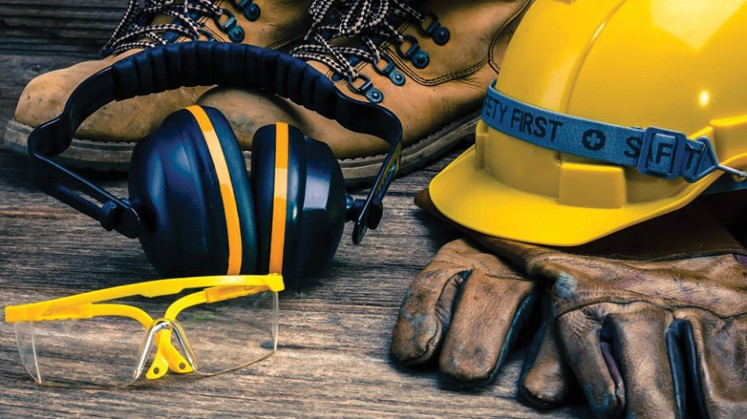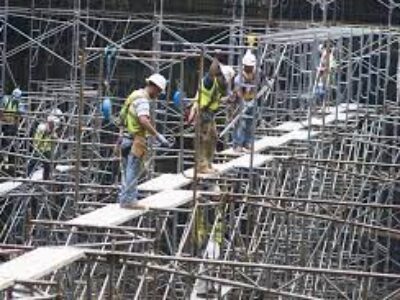Approximately 275 Americans lose their lives each day from illnesses and injuries associated with their places of work. Many times, the loss of health or life is due to exposure to a workplace hazard that happened quite some time ago. These facts are concerning to California residents who earn their living at industrial worksites.
The Hidden Danger: Why Industrial Illnesses Often Go Undetected
The CEO of the American Industrial Hygiene Association (AIHA) explains that many causes of industrial injuries and illnesses do not manifest themselves in the short term. This fact makes it difficult for people whose job it is to protect workers in industrial settings. To illustrate his point, the CEO gives the example of a safety officer tasked with convincing workers of the importance of wearing ear protection to prevent injuries that may not affect them for two decades.
Workplace illnesses such as mesothelioma, asbestosis, occupational cancers, and long-term hearing loss frequently emerge years, even decades, after the initial exposure. In many cases, these conditions are misdiagnosed or overlooked entirely, complicating efforts to seek justice and compensation. These long-term hazards don’t just impact individuals; they place emotional and financial strain on entire families and can even erode the economic stability of communities.
A Deep Dive into Latency and Hidden Exposure
One of the most misunderstood aspects of occupational illness is the latency period, the delay between exposure and symptom manifestation. Many industrial toxins and repetitive stressors quietly degrade a worker’s health over time, making it difficult to trace symptoms back to a specific event or employer.
Let’s examine this through real-world examples:
- Silicosis, caused by inhaling silica dust, may only appear after 15–30 years of cumulative exposure.
- Benzene exposure from industrial solvents is linked to blood disorders and leukemia that can take decades to emerge.
- Repetitive motion injuries, such as carpal tunnel syndrome, slowly intensify over time and may not be taken seriously until irreversible damage is done.
These delayed-onset conditions highlight the need for long-term monitoring, regular medical screenings, and proactive legal preparation.
The AIHA’s Three-Pronged Strategy for Industrial Safety
The AIHA’s approach in its quest to protect industrial workers against serious illness includes three strategic steps:
1. Enhancing Hazard Awareness Among Workers
By educating workers on both immediate and delayed threats, the AIHA encourages self-protective behaviors such as consistent PPE usage and early reporting of symptoms. Knowledge becomes the first line of defense.
2. Partnering with Employers for Workplace Safety
The organization works with businesses to implement safety protocols, provide appropriate protective gear, and maintain up-to-date compliance with OSHA and Cal/OSHA standards. This includes everything from proper ventilation to noise-dampening systems and rotational work schedules.
3. Cultivating a Culture of Safety in Schools
Through educational outreach to high school students, AIHA seeks to instill safety consciousness at an early age, preparing future workers to take ownership of their well-being before they ever step onto an industrial site.
The Cost to Families and Society
The AIHA’s CEO says the work the organization does is with the intent to save workers and their families. He explains that when a family’s primary wage earner is struck by illness, the emotional toll is often compounded by financial collapse. From unpaid medical bills to foreclosure risks, these indirect consequences ripple through generations. Children may be forced to leave school to support the household, while spouses may abandon their careers to become caregivers.
Moreover, companies suffer too. A chronically ill workforce leads to lower productivity, higher turnover, and legal liabilities. Protecting workers isn’t just a moral imperative, it’s an economic one.
Legal Recourse: Understanding Workers’ Compensation for Latent Illnesses
The occurrence of industrial injuries or illnesses at work can bring devastating consequences to workers and their families. A lawyer who is knowledgeable about workers’ compensation law may help individuals recover the compensation to which they are entitled when injured or made sick as a result of workplace conditions.
At Hussain & Gutierrez, we specialize in helping workers across California understand and claim their legal rights, even years after the exposure has occurred.
Key Legal Points to Understand:
- Statute of Limitations Exceptions: California law allows for extended filing deadlines in cases where symptoms appear long after the triggering event.
- Burden of Proof: Medical documentation linking your illness to your work history is critical.
- Multi-Employer Claims: If you’ve worked for several industrial employers, you may still file against any of them, or jointly, depending on exposure patterns.
- Family Claims: Spouses and dependents can file for death benefits, even if the worker passed years after leaving the job.
Beyond the Surface: The Economic and Emotional Toll
Beyond the direct medical implications, latent industrial illnesses often result in:
- Loss of household income
- Emotional trauma and depression
- Displacement from housing
- Career derailment for caregivers
- Bankruptcy or long-term debt
Families may suffer silently, especially when the diagnosis arrives too late to seek meaningful legal redress, another reason early consultation with a legal team is essential.
Prevention: A Shared Responsibility
While legal remedies exist, prevention remains paramount. Employers must:
- Conduct routine air quality tests.
- Rotate staff in high-risk zones.
- Provide advanced PPE (not just basic gear).
- Keep employees informed about new regulations and known hazards.
At the same time, workers must:
- Attend training sessions.
- Use PPE consistently.
- Report symptoms early.
- Encourage transparency within peer groups.
FAQs: Addressing Common Worker Concerns
Can I file a claim years after retiring?
Yes. If a doctor confirms that your illness is linked to past workplace exposure, California law may still allow a delayed claim.
My employer no longer exists. What can I do?
You can still file through California’s Uninsured Employers Benefits Trust Fund or pursue liability through corporate successors.
What’s the difference between OSHA and Cal/OSHA?
Cal/OSHA is California’s state-level program with stricter guidelines and enforcement mechanisms tailored to regional industries.
Do I need a lawyer for a workers’ comp claim?
While not legally required, an experienced attorney significantly improves your chances of securing the full benefits you’re entitled to.
Why Choose Hussain & Gutierrez?
We don’t just handle claims; we understand lives are at stake. With decades of experience in California workers’ compensation law, our firm offers:
- Free initial consultations
- Multilingual support for Spanish-speaking clients
- Personalized legal strategies built on your work and medical history
Contact us now to schedule a confidential case evaluation
Final Thoughts: Latency Shouldn’t Mean Injustice
Too often, workers suffer in silence because their illness doesn’t show up immediately. But silence should not mean surrender. With the right legal guidance and timely action, justice is still possible.



